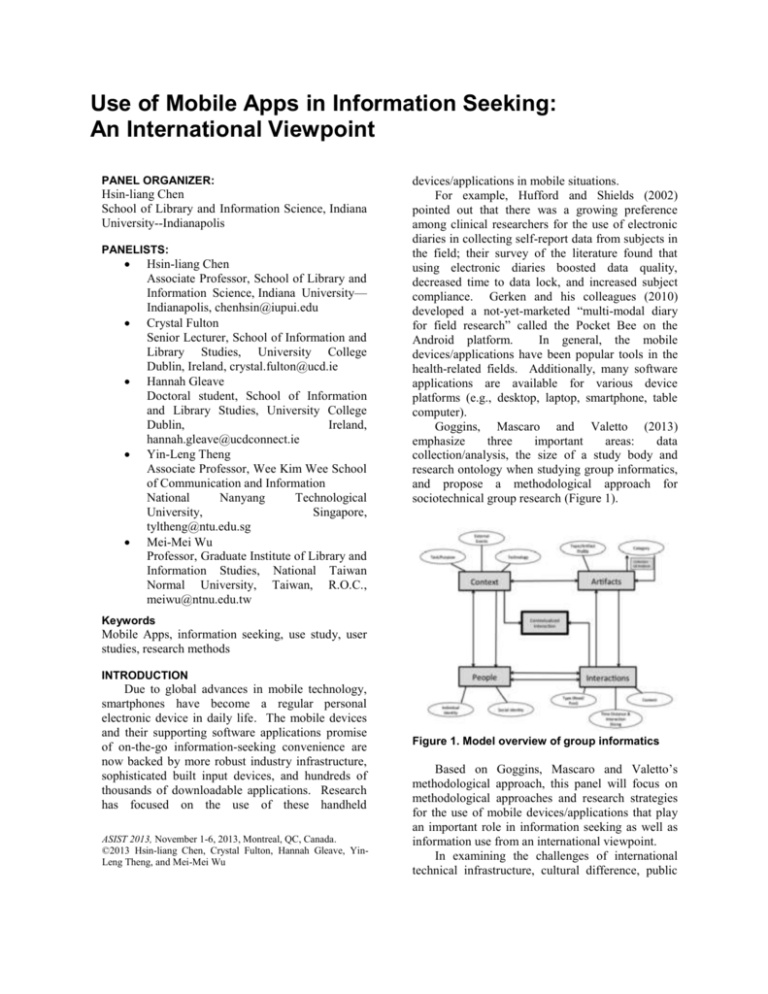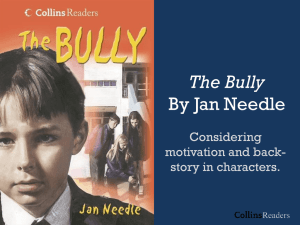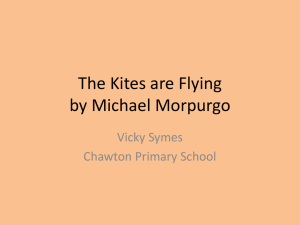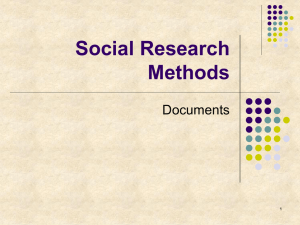Use of Mobile Apps in Information Seeking: An International Viewpoint
advertisement

Use of Mobile Apps in Information Seeking: An International Viewpoint PANEL ORGANIZER: Hsin-liang Chen School of Library and Information Science, Indiana University--Indianapolis PANELISTS: Hsin-liang Chen Associate Professor, School of Library and Information Science, Indiana University— Indianapolis, chenhsin@iupui.edu Crystal Fulton Senior Lecturer, School of Information and Library Studies, University College Dublin, Ireland, crystal.fulton@ucd.ie Hannah Gleave Doctoral student, School of Information and Library Studies, University College Dublin, Ireland, hannah.gleave@ucdconnect.ie Yin-Leng Theng Associate Professor, Wee Kim Wee School of Communication and Information National Nanyang Technological University, Singapore, tyltheng@ntu.edu.sg Mei-Mei Wu Professor, Graduate Institute of Library and Information Studies, National Taiwan Normal University, Taiwan, R.O.C., meiwu@ntnu.edu.tw devices/applications in mobile situations. For example, Hufford and Shields (2002) pointed out that there was a growing preference among clinical researchers for the use of electronic diaries in collecting self-report data from subjects in the field; their survey of the literature found that using electronic diaries boosted data quality, decreased time to data lock, and increased subject compliance. Gerken and his colleagues (2010) developed a not-yet-marketed “multi-modal diary for field research” called the Pocket Bee on the Android platform. In general, the mobile devices/applications have been popular tools in the health-related fields. Additionally, many software applications are available for various device platforms (e.g., desktop, laptop, smartphone, table computer). Goggins, Mascaro and Valetto (2013) emphasize three important areas: data collection/analysis, the size of a study body and research ontology when studying group informatics, and propose a methodological approach for sociotechnical group research (Figure 1). Keywords Mobile Apps, information seeking, use study, user studies, research methods INTRODUCTION Due to global advances in mobile technology, smartphones have become a regular personal electronic device in daily life. The mobile devices and their supporting software applications promise of on-the-go information-seeking convenience are now backed by more robust industry infrastructure, sophisticated built input devices, and hundreds of thousands of downloadable applications. Research has focused on the use of these handheld ASIST 2013, November 1-6, 2013, Montreal, QC, Canada. ©2013 Hsin-liang Chen, Crystal Fulton, Hannah Gleave, YinLeng Theng, and Mei-Mei Wu Figure 1. Model overview of group informatics Based on Goggins, Mascaro and Valetto’s methodological approach, this panel will focus on methodological approaches and research strategies for the use of mobile devices/applications that play an important role in information seeking as well as information use from an international viewpoint. In examining the challenges of international technical infrastructure, cultural difference, public policies, and research mandates, this panel will pose and address a number of questions, including: 1. What philosophical approaches do we take to understanding the benefits of diary mobile apps in information seeking and/or information use? 2. How can we thoroughly address the ethical issues surrounding the use of diary mobile apps? 3. What methods do we currently use for gathering and analyzing such data? 4. What challenges do diary mobile apps present to researchers and scholars, and how can we overcome these challenges? Digital diary apps and data collection: Research considerations/Hsin-liang Chen Thompson and Chen (2012) conducted a pilot study in which they asked 7 participants to employ the diary format—physical or digital—with which they felt most comfortable. Diary formats included paper and various electronic versions, including diary entries submitted by SMS (Short Message Service). The participants recorded each smartphone use in the diary for the period of one week. Participants included the “where,” “what,” “who,” and “why” for each smartphone use entry. Diaries provided a valuable glimpse into the situations in which participants use their smartphones and revealed how smartphones have not only continued to transform mobile information seeking but have also changed human-computer interaction in non-mobile situations. Thompson and Chen’s study was benefited by the pre-fixed diary format for data collection and analysis. Based on this result, two formats of diary apps are chosen to be discussed on the panel: structured vs. open (Figure 2). Figure 2. Diary apps My Diet Diary is a structured diary app in which users can enter their daily food consumption from a food database with a minimum effort. The data entry procedure can be done by keyword search, food labels, barcodes, etc. The daily meal table also helps to collect data. On the other side, Evernote is an open-ended diary app equipped with audio-video functions allows users to type text, take photos and videos as well voice notes. Users can choose those functions anyway they prefer. Regarding data exportation and analysis, both apps pose some challenges. My Diet Diary does not have a data exportation function but account holders can let “buddies” view their diet diary. That means a researcher must manually re-code the data. Evernote users can share their diaries via email. However, the diaries may not in an order as in My Diet Diary. Plus, AV files need to be downloaded and organized based on the researcher’s needs. In February 2013, I reviewed the latest 50 user reviews of both apps. For My Diet Diary, “easy to use” was the most common phrase in the user reviews. Particularly, users can easily track their daily calorie count and input data. Some users also complained about the fixed format limiting additional information. For Evernote, many users liked that it serves several platforms and various devices. Users can sync the data between different devices under the same account. The AV note-taking and typing functions were also popular with many users. Additionally, several users favored its organization capability with a keyword search function. In sum, both apps are relatively favorable by users. That means researchers can motivate participants to use apps like My Diet Diary and Evernote to collect data. However, data analysis is a challenge to the researcher. Students and Mobile Phone Apps -Everyday Uses for Problem-Solving/Crystal Fulton and Hannah Gleave A small exploratory study of social media use behaviour, in particular via mobile phone app, is raising interesting results. Undergraduate students enrolled in a social computing and media course were invited to discuss how, when and why they select, use and deselect social media. Although students are specifically introduced to a wide range of social media and building a mobile phone app is a major assessment outcome for this course, students were not interested in using a mobile app to keep a diary of their social media and app use. Instead, volunteers participated in brief focus group discussions of approximately twenty minutes about this topic. This paper offers the results of focus group discussions and offers insight into students' reported adoption behaviour in contrast with their perception of themselves as creators of innovation. Perceptions on online discussions for learning: A comparative study on engineering and social sciences graduate students/Yin-Leng Theng Information technology (IT) and the Internet have made inroads into teaching and learning in higher education. Students accustomed to a high degree of IT and Internet penetration in everyday life have themselves come to expect schools to use IT and the Internet to deliver education. Further, the current trend in education away from instructorcentred teaching and towards to student-centred learning has necessitated corresponding changes to delivery modes and instructional design, and have prompted instructors to look towards IT- and Webbased tools for solutions. For example, there is an increasing focus on developing adaptive environments in which socially constructed, collaborative and peer learning are investigated. Current information and communication tools (ICTs) are getting more sophisticated and powerful, enabling humans to interact, share and collaborate with ease and speed. To respond to the need that human interactions are equally important in the virtual space as it is in traditional classroom setting, a variety of social software has been developed to facilitate studentteacher and peer-to-peer interactions. Connell (2004) and Boyd (2003) contend that generally accepted definitions of social software are those that address the desire of individuals to be pulled into groups to achieve goals and feature support for conversational interaction between individuals or groups, support for social feedback, and/or support for social networks. Kaplan-Leiserson (2003) argues that while the initial focus of online learning was on the technology that drove it, these new social software tools are being adapted for use ranging from teens and business people to keep in touch, collaborate and learn from each other. One of these software tools is the “online discussion”, an important aspect of online learning systems designed to facilitate social learning on the go beyond face-to-face discussions. Argued by some that there are positive learning outcomes using online discussion tools, several studies (e.g. Bures et. al., 2000; Cheung & Huang, 2005; Landry et. al., 2006; etc.) continue to probe and investigate the motivational factors behind students’ participation, or the lack of it, in online discussion forums. The purpose of this study was to conduct a comparative study on the perceptions of online discussions on graduate students from two different disciplines in a local university in Singapore: Engineering (EE) and Social Science (SS). A survey instrument was developed to determine students’ perceptions and usage of online communication mediated tools. A total of 202 students, who used online discussion forums, took part in the survey. While students agreed that ‘EdveNTUre’ (university’s learning management system powered by ‘BlackBoard’) was useful to help them complete their assignments; participation in online discussions was largely tutor-driven. Students from SS showed a higher level of usage of online discussion boards and considered them important to achieving good grades; whereas the students from EE did not think so. On-going work should include investigations into understanding factors for acceptance and adoption of computer-mediated discussions for learning. Apps use behavior of graduate students in the contexts of learning and everyday life: NTNU’s experience/Mei-Mei Wu Mills’ concept of “Intellectual Craftsmanship” (Mills, 1959) is particularly important in the digital age, with countless Apps for diary/note-taking developed everyday. This talk reports two studies, one is the analysis from the existing data, a goodle survey. Google Survey released the results of their annual Mobil Use Survey (Google, 2012) of which includes Taiwan as their survey target for the first time. By comparing Ireland, Singapore, Taiwan and US, (the components of this panel), it is found that some similarities and differences, e.g., similar pattern appears in the length of online sessions on smartphone. There are also differences, e.g., Taiwan users view more web pages while less satisfied with webpage browsing. Although mobile use patterns are not the focus of the study, it suggests different use behavior in these countries. The second study is to survey how the current young generation at the graduate level uses Apps, the edge-cut device, to take notes of all kinds, and to get themselves as “Intellecture craftsman.” Qualitative approach is applied for journal survey (Sohn, etc., 2008). A pilot study is conducted by asking graduate students to record their daily information seeking and/or use activities by filling a Google form sent out everyday for a period of two weeks. Twelve graduate students participate as volunteers among the total of 19 in the Research Method Class 2013 spring. A total of 61transactions are collected. The preliminary analysis found that students preferred using PC for note taking then Apps at the current stage. REFERENCES Boyd, S. (2003). Are You Ready for Social Software? Darwin Magazine. Retrieved May 21, 2006 from: Hufford, M.R., & Shields, A.L. (2002). Electronic http://www.darwinmag.com/read/050103/social diaries: Applications and what works in the .html. field. Applied Clinical Trials, 11, 46-59. Bures, E., Abrami, P. & Amundsen, C. (2000). Kaplan-Leiserson, E. (2003). We-Learning: Social Student motivation to learn via computer Software and E-Learning. Retrieved April 13, conferencing. Research in Higher Education, 2013, from 41(5), 593-621. http://www.learningcircuits.org/2003/dec2003/k Cheung, W., & Huang, W. (2005). Proposing a aplan.htm. framework to assess Internet Usage in Landry, B., Rodger G. & Hartman S. (2006). university education: an empirical investigation Measuring Student Perceptions of Blackboard from a students' perspective. British Journal of Using the Technology Acceptance Model, Educational Technology, 36(2), 237-253. Decision Sciences Journal of Innovative Connell, S. (2004). Uses for Social Software in Education, 4(1), 87-99. Education: A Literature Review. Retrieved Mills, C. W. (1959). On intellectual craftsmanship. April 13, 2013, from Appendix to The sociological imagination. http://soozzone.com/690review.htm. Oxford University Press. Gerken, J., Dierdorf, S., Schmid, P., Sautner, A., & <http://archivingthecity.files.wordpress.com/20 Reiterer, H. (2010). Pocket Bee: A multi-modal 11/01/mills_on_intellctual_craftmanship.pdf > diary for field research. In NordiCHI ’10: Sohn, T., Li, K.A., Hollan, J., Griswold, W.G. A Proceedings of the 6th Nordic Conference on Diary Study of Mobile Information Needs. In Human-Computer Interaction, 651-654. Proceedings of the Twenty-Sixth Conference on Goggins, S. P., Mascaro, C., & Valetto, G. (2013). Human Factors in Computing (CHI). Florence, Group informatics: A methodological approach Italy, 2008. and ontology for sociotechnical group research. Thompson, D., & Chen, H. (2012). Understanding Journal of American Society for Information situational factors of smartphone use: A pilot Science and Technolgy, 64(3), 516-539. study of user diaries. ISIC2012: the Information Google (2012). Our Mobile Planet. March 27, 2013 from Behaviour Conference, Keio University, Tokyo, http://www.thinkwithgoogle.com/mobileplanet/en/ Japan.








![FWD%20Review[1]](http://s2.studylib.net/store/data/005398137_1-d53fea9dfb8d771a2ec92c1825202857-300x300.png)
